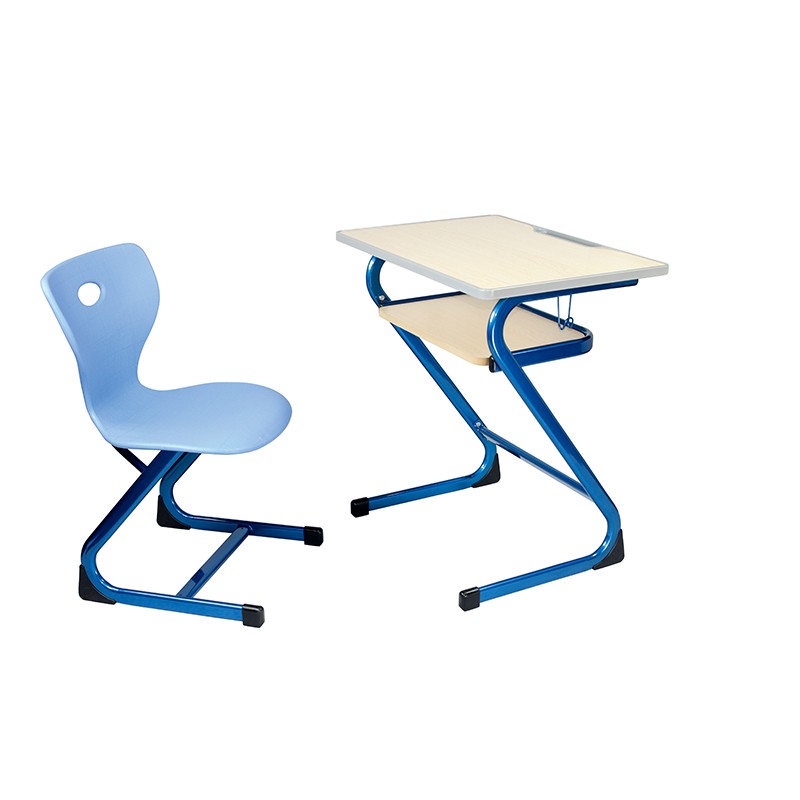Driven By The Goal Of Carbon Neutrality, How Do Bio-Based Materials Reshape The School Furniture Supply Chain?
The global education industry's annual carbon emissions exceed 120 million tons, of which school furniture manufacturing accounts for 17%. Driven by the EU carbon tariff and the Green Public Procurement Policy of various countries, bio-based materials are replacing traditional plastics at an annual growth rate of 23%.
Ⅰ. Policy high-voltage line: Global green procurement standards upgrade
1. Regulatory matrix
| Area | Core Policy | Requirements For School Furniture |
| EU | The CBAM Is Fully Effective In 2026 | A Full Life Cycle Carbon Footprint Report (LCA) Is Required |
| America | Inflation Reduction Act Subsidy Program | A 15% Tax Credit For Using 50% Recycled Material |
| China | Double-Carbon Target + Green Product Certification | GB / T 35601 Should Be Reached To Enter The Government Procurement Catalog |
2. Cost game
Traditional PP plastic desks: unit price $85, implicit carbon cost $12.3/set;
Biological-based material desks: unit price $105, but through carbon trading and subsidies can be reduced to $89, the actual use cost is lower.

Ⅱ Material Revolution: Performance Comparison of Four Bio-based Solutions
1. Mainstream Technology Path
| Material Type | Source Of Feed | Carbon Emission Reduction Rate | Cost Premium | Applicable Scene |
| Bagasse Fibre | Sugar Industry Waste | 58% | +15% | Desk Panel, Lockers |
| Bamboo Plastic Composite Material | Bamboo Powder + Regenerated PE | 41% | +12% | Chair Frame, Bookshelf |
| The Mycelium Foam | Agricultural Straw + Fungus | 67% | +35% | Kindergarten Soft Bag Furniture |
| Marine Plastic Recycled Material | Recycling Fishing Nets | 29% | +8% | Outdoor Seats |
2. AOYASI Innovative Solution
EcoDesk Pro Series:
Desk body: bagasse fiber (accounting for 60%) + bamboo plastic frame;
Performance: flexural strength ≥18MPa, no deformation after 5000 hours of moisture and heat resistance test;
Certification: Passed FSC Mix 70% certification, carbon footprint is only 11.3kg CO₂/set.
Ⅲ. Compliance Challenge: Crossing the International Certification Gap
1. Navigating the Certification Maze
FSC Certification: To ensure the sustainable source of wood, a CoC (chain of custody) traceability system needs to be established;
EN 13432: Industrial composting certification, requiring the decomposition rate of biodegradable materials to be ≥90% within 180 days;
GREENGUARD Gold: VOC emission must be ≤0.05mg/m³, which is 6 times stricter than the national standard.
2. AOYASI Certification Matrix
| Approval Standards | Cover Product Line | Market Access Area |
| Cradle To Cradle | Kindergarten Furniture | European Union, North America |
| EP EAT | Primary And Secondary School Desks And Chairs | The Global Green Schools Program |
| China Environmental Label | The Whole Category | The Chinese Government Gives Priority To The Purchase |
IV. Procurement Strategy: A Four-Step Approach to Balancing Costs and Carbon Neutrality Goals
Carbon Audit Priority:
Use AOYASI's CarbonX tool to calculate the carbon footprint baseline of existing furniture;
Step-by-step Replacement:
Replace 20% of high-carbon products in the first year (e.g. plastic chairs → bamboo-plastic chairs);
Policy Arbitrage:
EU projects apply for ERDF funds to subsidize the purchase of bio-based materials (up to 30%);
Circular System Construction:
Sign a recycling agreement with AOYASI, and the disassembly and recycling rate of old furniture can reach 85%.


